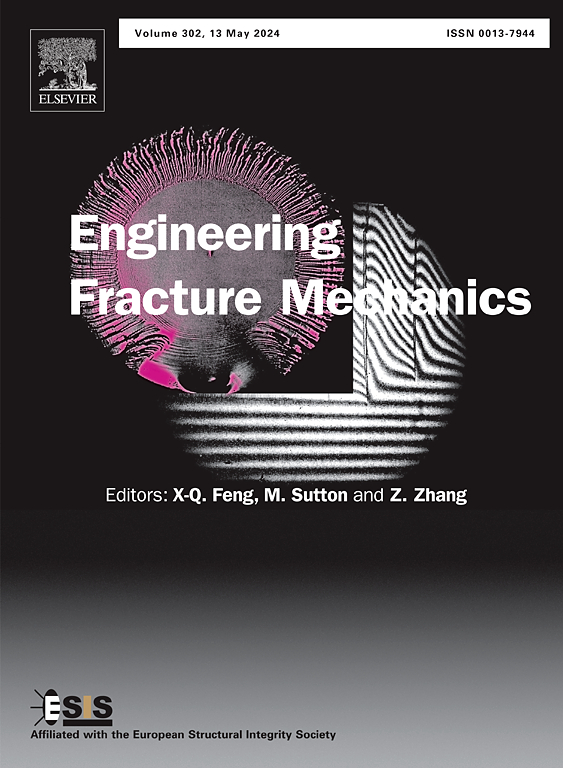Meso-mechanical characterization on thermal damage and low-temperature cracking of asphalt mixtures
IF 4.7
2区 工程技术
Q1 MECHANICS
引用次数: 0
Abstract
As temperature fluctuates, thermal stresses and heterogeneous strains emerge within the asphalt mortar and the interface between asphalt and aggregate in asphalt mixtures, especially under a low temperature domain. This study provides a comprehensive investigation on the characterization of thermal damage in asphalt mixtures and their evolutionary mechanisms from a mesoscale perspective. A 2D numerical model is established based on the bilinear cohesive zone model (CZM), and the cohesive strength (σc⁰) and adhesive strength (σa⁰) were quantified with pull-off tests and image recognition technology to accurately represent the material’s properties at the mesoscale. On the other hand, the cohesive fracture energy (GcC) and adhesive fracture energy (GaC) are determined based on the laboratory and simulation results from the semi-circular bending (SCB) tests. Furthermore, the model is verified to be effective to characterize the thermal damage and low-temperature cracking of asphalt mixtures with the thermal stress restrained specimen test (TSRST). The findings reveal that the numerical model established in the study is effective to characterize the low-temperature damage of asphalt mixtures. The transition zones between asphalt and aggregate, as well as the edges of voids or defects, are particularly vulnerable to low-temperature damage under the thermal stress and strain. By decomposing strains and linking them to stress for analysis, a more detailed description of the thermal damage and failure mechanisms of the asphalt-aggregate interface and asphalt mortar within asphalt mixtures has been elucidated. During temperature variation, asphalt mortar experiences a substantially higher total strain than aggregate, contributing to a continuous growth of thermal stress inside of the asphalt mixture. The cohesive damage within the asphalt mortar is dominant compared to adhesive damage on the interface between asphalt and aggregate, whereas thermal damage on the interface can also be perceived in some regions due to stress concentration and accumulation, especially at the stage of cracking initiation.

求助全文
约1分钟内获得全文
求助全文
来源期刊
CiteScore
8.70
自引率
13.00%
发文量
606
审稿时长
74 days
期刊介绍:
EFM covers a broad range of topics in fracture mechanics to be of interest and use to both researchers and practitioners. Contributions are welcome which address the fracture behavior of conventional engineering material systems as well as newly emerging material systems. Contributions on developments in the areas of mechanics and materials science strongly related to fracture mechanics are also welcome. Papers on fatigue are welcome if they treat the fatigue process using the methods of fracture mechanics.

 求助内容:
求助内容: 应助结果提醒方式:
应助结果提醒方式:


